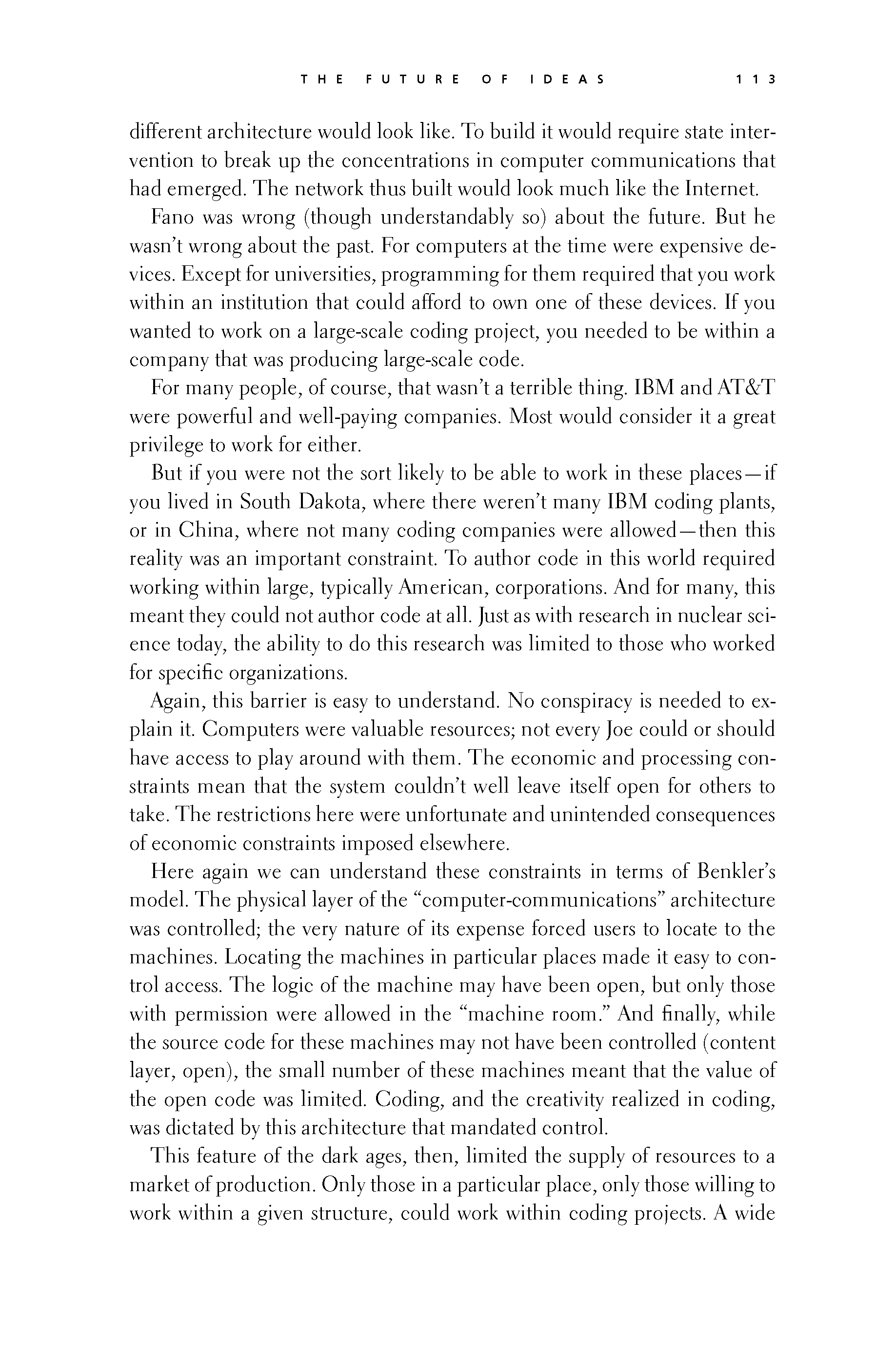 p112 _
-chap- _
toc-1 _
p113w _
toc-2 _
+chap+ _
p114
p112 _
-chap- _
toc-1 _
p113w _
toc-2 _
+chap+ _
p114
different architecture would look like. To build it would require state inter-
vention to break up the concentrations in computer communications that
had emerged. The network thus built would look much like the Internet.
Fano was wrong (though understandably so) about the future. But he
wasn't wrong about the past. For computers at the time were expensive de-
vices. Except for universities, programming for them required that you work
within an institution that could afford to own one of these devices. If you
wanted to work on a large-scale coding project, you needed to be within a
company that was producing large-scale code.
For many people, of course, that wasn't a terrible thing. IBM and AT&T
were powerful and well-paying companies. Most would consider it a great
privilege to work for either.
But if you were not the sort likely to be able to work in these places -- if
you lived in South Dakota, where there weren't many IBM coding plants,
or in China, where not many coding companies were allowed -- then this
reality was an important constraint. To author code in this world required
working within large, typically American, corporations. And for many, this
meant they could not author code at all. Just as with research in nuclear sci-
ence today, the ability to do this research was limited to those who worked
for specific organizations.
Again, this barrier is easy to understand. No conspiracy is needed to ex-
plain it. Computers were valuable resources; not every Joe could or should
have access to play around with them. The economic and processing con-
straints mean that the system couldn't well leave itself open for others to
take. The restrictions here were unfortunate and unintended consequences
of economic constraints imposed elsewhere.
Here again we can understand these constraints in terms of Benkler's
model. The physical layer of the "computer-communications" architecture
was controlled; the very nature of its expense forced users to locate to the
machines. Locating the machines in particular places made it easy to con-
trol access. The logic of the machine may have been open, but only those
with permission were allowed in the "machine room." And finally, while
the source code for these machines may not have been controlled (content
layer, open), the small number of these machines meant that the value of
the open code was limited. Coding, and the creativity realized in coding,
was dictated by this architecture that mandated control.
This feature of the dark ages, then, limited the supply of resources to a
market of production. Only those in a particular place, only those willing to
work within a given structure, could work within coding projects. A wide
[[113]]
p112 _
-chap- _
toc-1 _
p113w _
toc-2 _
+chap+ _
p114